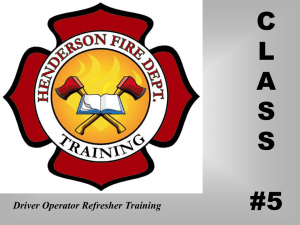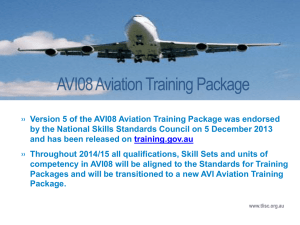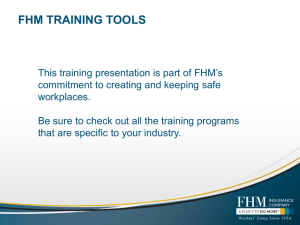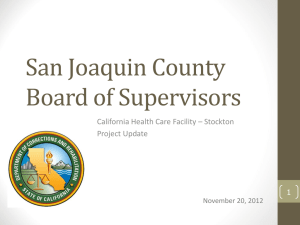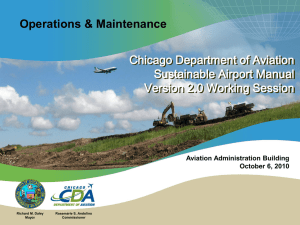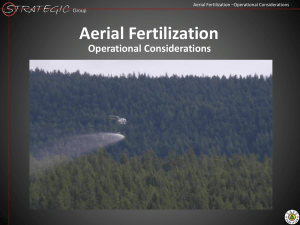Aerial Application - National Agricultural Aviation Association
advertisement
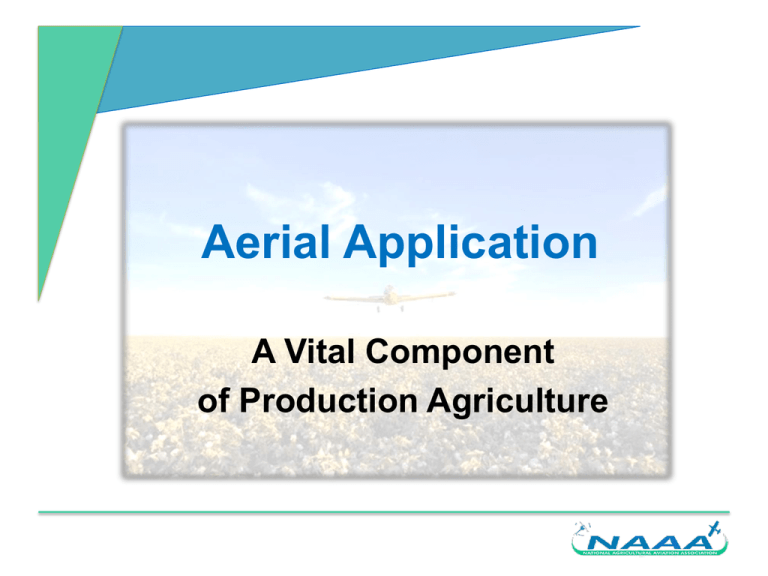
Aerial Application A Vital Component of Production Agriculture Ag Aviation History • 1921 – Lt. John Macready made the world’s first aerial application spreading lead arsenate dust over catalpa trees in Ohio to kill sphinx moth larvae using a Modified Curtiss JN-6 “Super Jenny” • 1923 – Huff-Daland Dusters, Inc. – the forerunner to Delta Air Lines – performs the first commercial dusting of crops • 1930s and ‘40s – Open-cockpit Stearman biplanes used to spray crops Ag Aviation History • 1951 – Leland Snow begins designing his first ag airplane – the S-1 • 1957 – The Grumman G-164 Ag-Cat is the first aircraft designed by a major aircraft company for ag aviation • 1966 – The National Agricultural Aviation Association (NAAA) is founded in Washington, D.C. to be the “recognized public policy advocate for the agricultural aviation industry.” Scope • Aerial application accounts for just under 20% of all applied crop protection products on commercial farms • The industry also provides firefighting and public health application services • According to a 2012 NAAA survey, the five most common aerially treated crops are: corn, wheat/barley, soybeans, pastures/rangelands and alfalfa, but aerial application is used on many more crops grown in the U.S. Importance • Aerial application is often the only, or most economic, method for timely pesticide application – By far the fastest method of application to treat crops – Non-disruptive to the crop, hence preventing crop damage and soil runoff – Allows for greater harvest yields of crops, resulting in preservation of natural ecosystems such as wetlands and forests important for water filtration and carbon sequestration Fast! Efficient! Effective! Versatile! Fast! Efficient! Effective! Versatile! Fast! Efficient! Effective! Versatile! Size • Approximately 1,350 aerial application businesses in the U.S. and 1,430 non-operator pilots • 94% of aerial application business owners (operators) are also pilots • Aerial application businesses are located in 44 states – all but Connecticut, Hawaii, Nevada, Rhode Island, Vermont and West Virginia Size • According to a USDA Economic Research Service Report, of the United States’ 408 million acres of cropland, about 70% (286 million acres) is commercially treated with crop protection products • The agricultural aviation industry treats 71 million acres of cropland aerially each year Ag Aircraft • On average, each aerial application business has 2.1 aircraft, ranging in price from $100,000 to $1.4 million • 87% are fixed wing; 13% are rotorcraft/helicopters • 67% are turbine powered; 33% have piston engines Training • The average aerial applicator pilot has 21.3 years of experience and the average operator has 27.4 years of experience in the industry • Ag pilots have their commercial pilots’ licenses and must also be registered as commercial pesticide applicators in the states which they make applications • Aerial applicators must hold the Federal Aviation Administration Part 137 Certificate that allows for low-level agricultural aviation operations Precision Agriculture • Today’s ag aircraft use sophisticated precision application equipment such as: – GPS (global positioning systems) – GIS (geographical information systems) – Aircraft Integrated Meteorological Measurement System (AIMMS)--real time meteorological systems – Flow control valves for variable-rate applications – Single-boom shutoff valves – Smokers to identify wind speed and direction Precision Agriculture • Precisely calibrated spray equipment enables less pesticide product to be applied to more acres, resulting in greater fuel efficiency and a more targeted delivery Spray Drift Mitigation • NAAA developed the Professional Aerial Applicators’ Support System (PAASS) to provide pilots continuing education about safety, security and drift mitigation • PAASS program receives EPA support and reaches approximately 2,000 aerial applicators annually • Since 1998 when PAASS first hit the stage, aerial drift incidents have decreased 26%; ag aviation accidents have decreased 20.63% per 100,000 hours flown. Spray Drift Mitigation • NAAA’s Operation S.A.F.E. (Self-regulating Application & Flight Efficiency) program enables aerial applicators to attend fly-in clinics and have their aircraft professionally analyzed for spray pattern uniformity and droplet size. This minimizes drift and maximizes the efficacy of the application. Ag Aviation Priority Issues • Obstacles – In the last 10 years, 7.2% of aerial application fatalities were the result of collisions with towers – NAAA is urging the FAA to expand recommendations for marking obstacles (towers and UAS’) to protect aerial applicators. These include recommendations to mark and light all UAS’ and guy-wired and free-standing towers over 50 ft; and to develop a searchable database for the location of such towers and operating UAS’. Ag Aviation Priority Issues • Fund Aerial Application Technology Research – Federal funding for aerial application research must be maintained, as it improves the precision and efficacy of aerial application – USDA economists have found that every dollar invested in ag research has a $20 return to the economy Ag Aviation Priority Issues • NPDES Permits – NAAA is lobbying Congress to exempt duplicative, unnecessary and burdensome NPDES permits for pesticide applications; current federal law (FIFRA) already regulates the safety of pesticide to water http://www.agaviation.org/content/details-epas-npdespesticide-general-permit Ag Aviation Priority Issues • Taxes and User Fees – The majority of ag aircraft do not use public airports and rarely show up on the nation’s air traffic control system – Despite the Obama administration’s push for a $100 user fee, current exemption for ag aviation from federal aviation fuel excise taxes and user fees must be maintained Voice of the Aerial Application Industry 1440 Duke Street Alexandria, VA 22314 (202) 546-5722 (202) 546-5726 (FAX) www.agaviation.org
